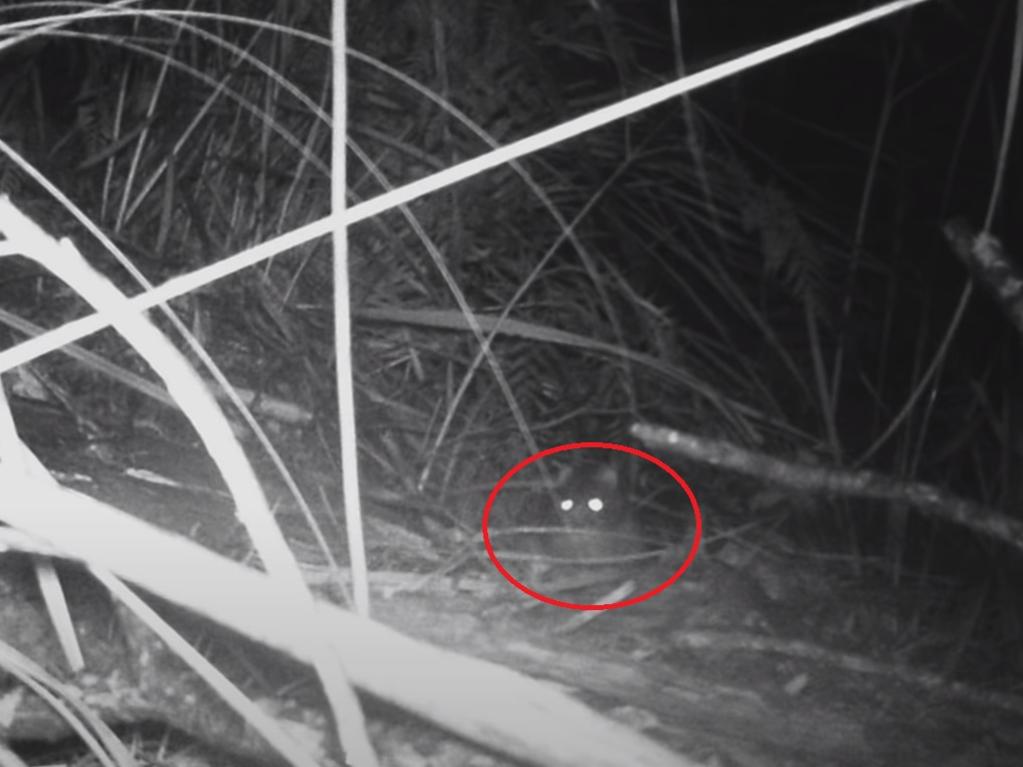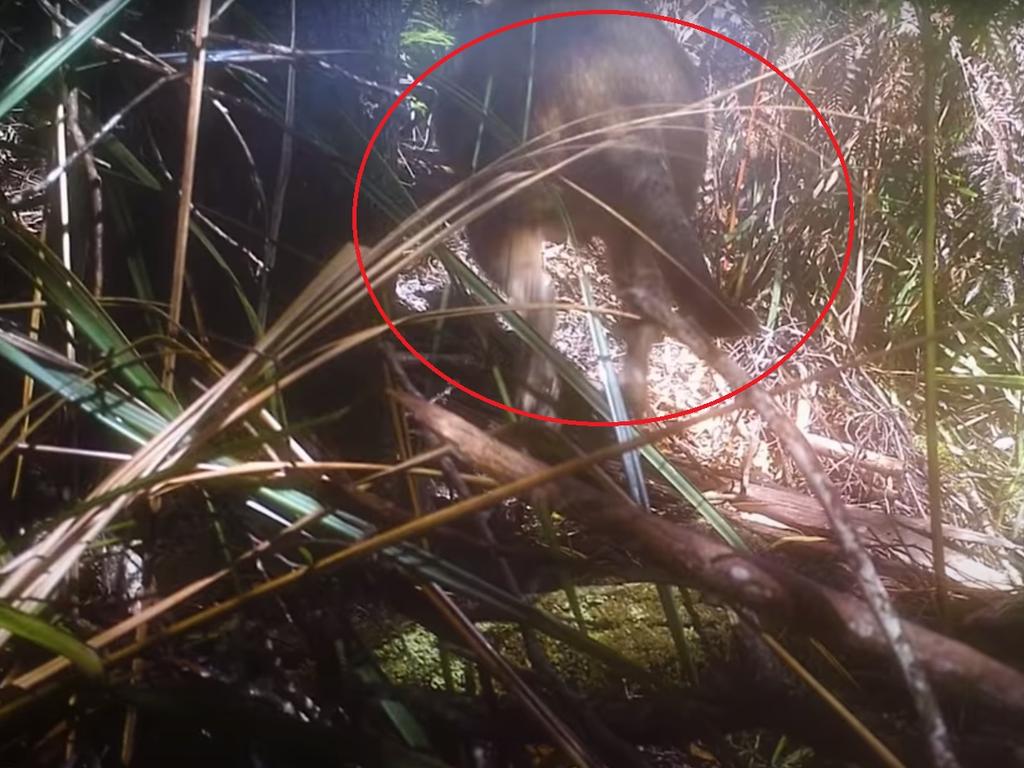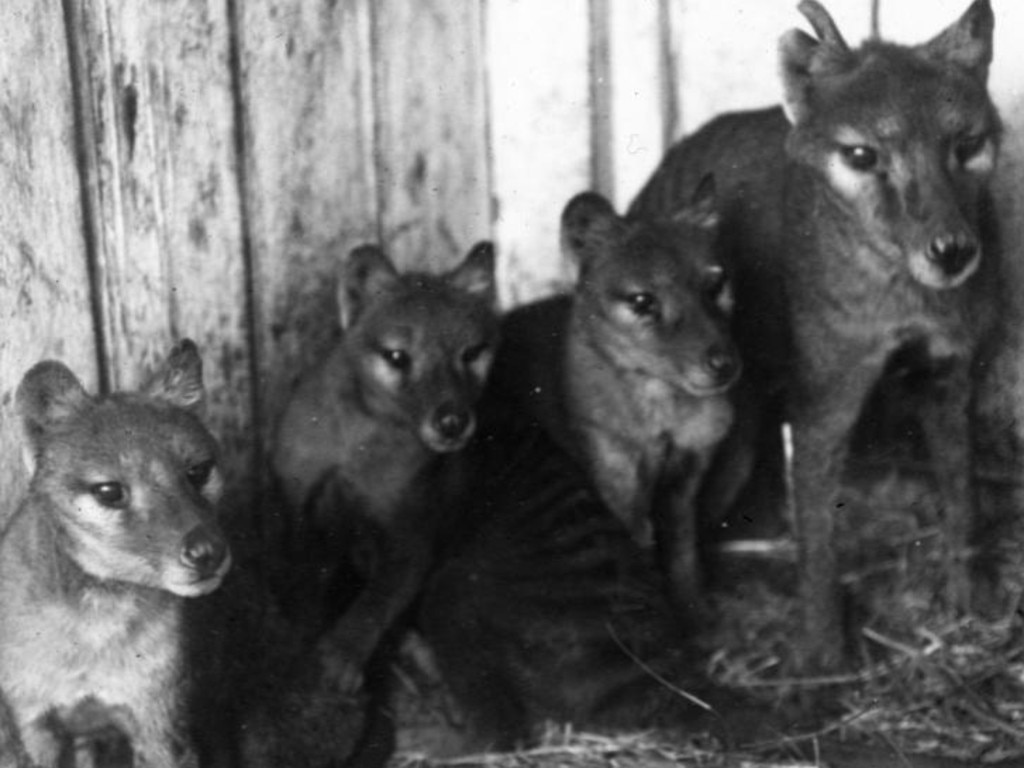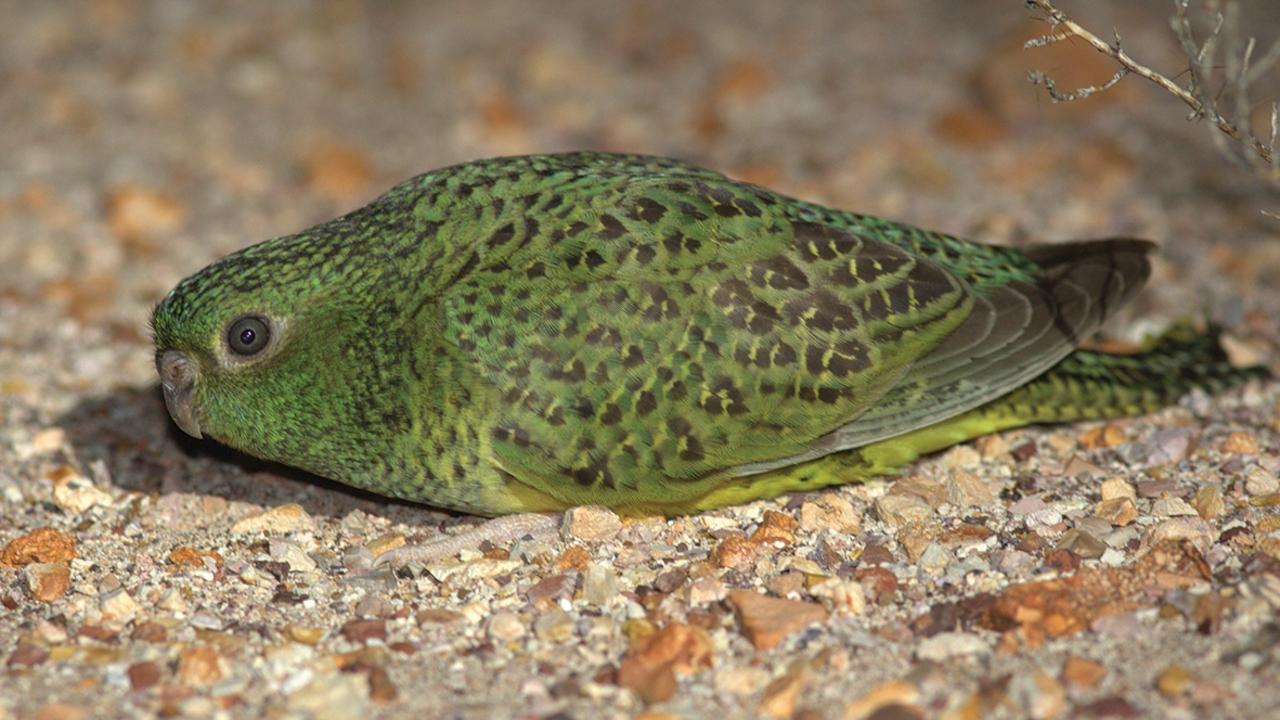Missing pieces of Tasmanian tiger photo puzzle needed
The world was underwhelmed when highly anticipated photos of a Tasmanian tiger family were released - and one expert has pointed out something “odd” about them.
When Neil Waters released the photos of what he claimed was Tasmanian tiger family to the world yesterday, many hopes were dashed.
The blurry images didn’t provide any definitive proof the extinct thylacine was still alive, as the president of the Thylacine Awareness Group of Australia claimed they would.
But experts have now questioned whether Mr Waters is actually holding something back, only releasing still image grabs from what looked to be video footage.
“I felt like he was holding something back from sharing with us,” Professor Andrew Pask, a marsupial evolutionary biologist at the University of Melbourne, told news.com.au.
“It was an odd way to share the data. If he really wants it scrutinised and a professional opinion he should release (the video footage).”
Professor Pask said you could get a lot more clues from moving footage, suggesting perhaps the actual clips might have been held back because they didn’t support Mr Waters’ theory.
“I felt disappointed when he shared the images,” he said.
“Maybe it didn’t move like a thylacine - they don’t share it if it diminishes the claim. I was
left kind of empty.”
Photos of the unusual looking animals captured in northern Tasmania bushland got tongues wagging across the world, with Mr Waters saying he was “absolutely confident” one was a thylacine joey.
Even expert opinions that one of the “least ambiguous” images was likely of a pademelon joey weren’t enough to convince him.
The South Australian thylacine enthusiast interviewed all kinds of experts for his video release of the highly-anticipated photos he teased a week earlier.
RELATED: ‘Proof’ Tasmanian tiger still exists


Dog and cat experts ruled them out as options, with one vet even saying there was a 70 to 80 per cent chance Mr Waters had snapped a Tasmanian tiger.
News.com.au readers weren’t convinced on the cat ruling, with more than 60 per cent voting the main image was of a cat or kitten, among 14,500 votes.
Professor Pask said given that the thylacine had not been seen for 85 years, the likelihood it was something else was by far the most logical conclusion.
RELATED: Unearthed footage shows last-known glimpse of extinct Tasmanian tiger

The time since the last sighting isn’t enough to convince some people though - pointing to the mysterious night parrot, one of the most elusive birds in the world.
First recorded in 1845, the last living specimen was collected in Western Australia in 1912. It then disappeared, with no confirmed records of the bird between 1912 and 1979.
In 2013 naturalist and wildlife photographer John Young captured several photos and a few seconds of video footage of a live bird in western Queensland.

Nick Mooney, Honorary Curator of Vertebrate Zoology at the Tasmanian Museum and Art Gallery, did a six-page assessment of the four photos in Mr Waters’ video.
He said the apparent stripes were more “a combination of narrow shadows (from sticks and cutting grass) and natural parts in the fur”.
Mooney suggested pademelons based on animal colour, lack of bands, body shape and some foot detail.
“If these were videos not stills there would have been no question,” he said.




